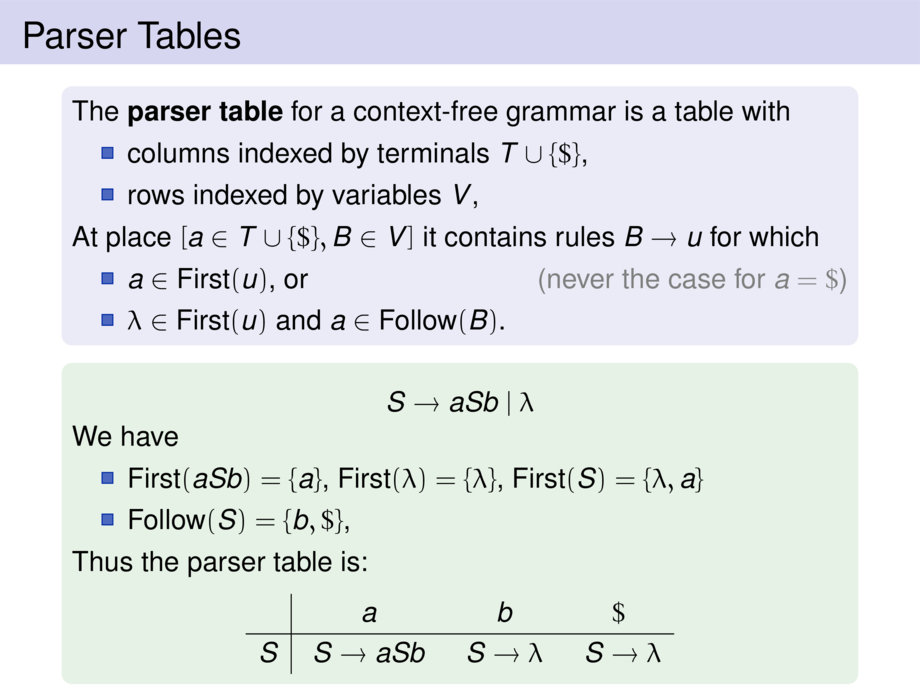



































































































92/136
\begin{frame}{Parser Tables}
\begin{block}{}
The \emph{parser table} for a context-free grammar
is a table with
\begin{itemize}\setlength{\itemsep}{0pt}
\item columns indexed by terminals $T \cup \{\$\}$,
\item rows indexed by variables $V$,
\end{itemize}
At place $[a \in T \cup \{\$\},B \in V]$ it contains
rules $B \to u$
for which
\begin{itemize}\setlength{\itemsep}{0pt}
\item $a \in \first{u}$, or \hfill\textcolor{black!50}{(never the case for $a = \$$)}
\item $\lambda \in \first{u}$ and $a \in \follow{B}$.
\end{itemize}
\end{block}
\pause
\begin{exampleblock}{}
\begin{malign}
S \to aSb\mid\lambda
\end{malign}
We have
\begin{itemize}\setlength{\itemsep}{0pt}
\item
$\first{aSb} = \{a\}$,
$\first{\lambda} = \{\lambda\}$,
$\first{S} = \{\lambda, a\}$
\item
$\follow{S} = \{b,\$\}$,
\end{itemize}
Thus the parser table is:
\begin{talign}
\begin{array}{l|ccc}
& a & b & \$ \\
\hline
S & \mpause[1]{~S \to aSb~} & \mpause{~S \to \lambda~} & \mpause{~S \to \lambda}
\end{array}
\end{talign}\vspace{-1ex}
\end{exampleblock}
\end{frame}

